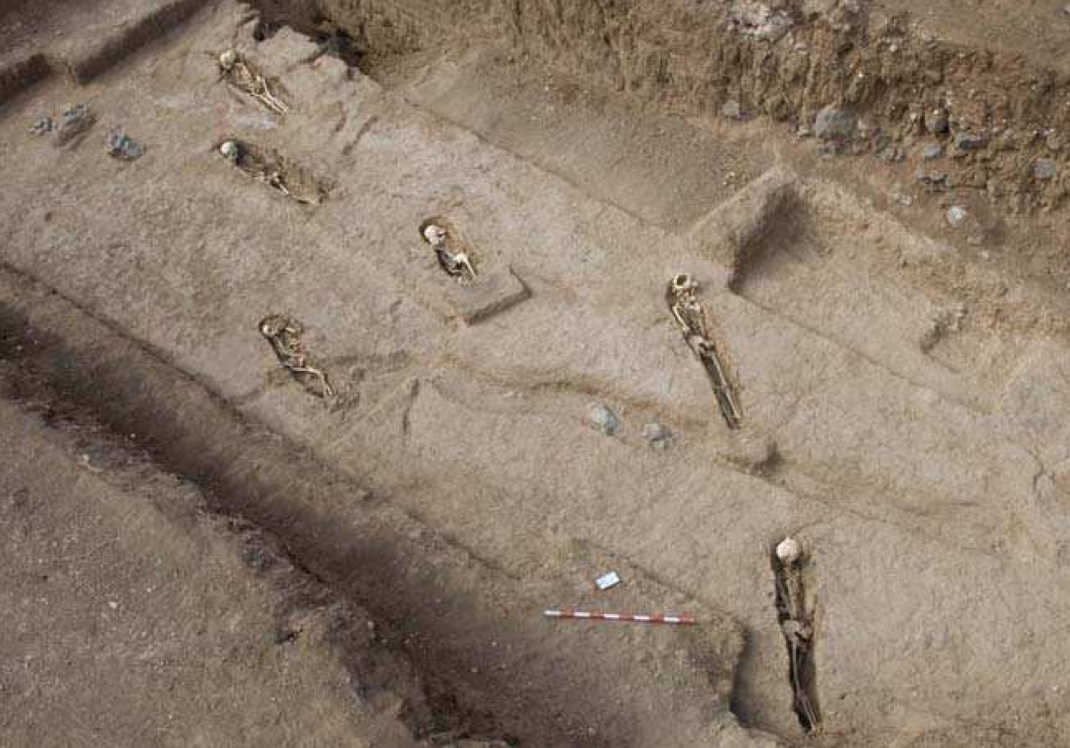Finca Clavijo
- Period: Historic
- Location: Canary Islands
- Burials: 14 individuals
- Archaeologists: Santana, J., Fregel, R., Lightfoot, E., Morales, J., Alamón, M., Guillén, J., Moreno, M., & Rodríguez, A.
- Related Keyword/Categories: Identity, Behavior & Activity, Funerary Activity

Santana et al. (2016) investigates the Finca Clavijo cemetery, a newly discovered set of burials dating from the 15th and 17th centuries. The cemetery is located in the northern part of Gran Canaria, an area that was dedicated to sugar cane production, and was found in an old sugar cane field, an unusual location for burial and located far from the places where individuals were usually inhumed in this period. Finca Clavijo was discovered during construction, but the complete cemetery could not be excavated due to the limits of the building works. In total, they located seven burials with eight individuals that were in their primary burial context, and six individuals that were displaced during construction. Santana et al. (2016) use DNA, stable isotopes, skeletal markers of physical activity, and the burial methods in order to understand who these individuals were, and what their relationship to the slave trade was. The sample has a minimum number of 14 individuals, including three young adult females, one older adult female, one middle adult male, three sub-adults, and five that could not be determined. All individuals were buried on their sides, with their heads slightly raised, with legs extended or slightly flexed, and there were no clear patterns for placement of the arms. All skeletons were oriented West to East, a traditionally Christian practice of facing the rising sun. Grave goods include glass beads from bracelets, earrings, a medal, a coin, a shoelace, and a circular fragment of metal. Additionally, there were fragments of sugar molds found in other archaeological levels of the site. DNA analysis showed that people buried at Finca Clavijo came from a variety of different genetic groups, including Northwest Africa, Sub-Saharan Africa and one individual who was likely a Canarian aboriginal descendant. Stable isotope analysis showed that two of the 14 individuals were not born in the Canary Islands, and likely were raised in Africa. The skeletal markers of physical activity support that all of these individuals had hard working lives, and were likely involved in the harvesting and processing of sugar cane. There was significant stress placed on the spine, arms and legs, and the patterns of wear indicate that they were doing highly repetitive motions. Osteoarthritis, Schmorl’s nodes and herniated discs are common among enslaved populations, and have been recorded for other enslaved peoples in South Caroline, Waterloo and Barbados.
References: Santana, J., Fregel, R., Lightfoot, E., Morales, J., Alamón, M., Guillén, J., Moreno, M., & Rodríguez, A. (2016). The early colonial atlantic world: New insights on the African Diaspora from isotopic and ancient DNA analyses of a multiethnic 15th-17th century burial population from the Canary Islands, Spain American Journal of Physical Anthropology, 159 (2), 300-312 DOI: 10.1002/ajpa.22879


